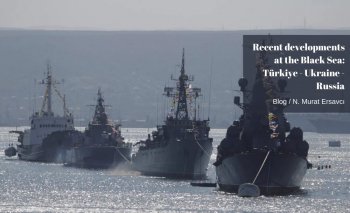Commentaries
Fatih Özatay, PhD - [Archive]
Committee on Financial Stability 21/06/2011 - Viewed 1231 times
Although the Financial Stability Committee seems to be a good idea in terms of coordination, it turns out to be the opposite when you think through.
A few weeks before the elections it was announced that the Committee on Financial Stability was established. The committee is composed of the following institutions: Banking Regulation and Supervision Agency (BRSA), Central Bank (CBT), Capital Markets Board (CMB), Savings Insurance Deposit Fund (SIDF) and the Treasury.
Coordinated policy process
According to a newspaper article, speaking at Istanbul Fatih University on May 21, Minister Ali Babacan said: "From now on, the presidents of these institutions will debate and key economic issues and make and implement decisions in a coordinated manner. We will advice this model to many countries, beginning with the G-20 countries."
On the one side, this is a crucial step in the right direction. The only reason why the decisions the CBT has introduced since the second half of 2010 proved futile was that the BRSA did not step in. If it had stepped in and limited the short-term borrowings from the CBT, for instance, the efforts of the CBT would have been some more productive (some more, because this would not be enough: fiscal policy should also have been tightened). Therefore, the establishment of such committee at least means that the coordination problem will ease.
But wait a second: we can read this with another lens, too. Some of the institutions in the committee are independent. On the other hand, the Treasury is affiliated to the state minister or the deputy prime minister. Then what? Assume that the CBT wants to increase the policy rate while the rest of the committee thinks this is not the right step to take. What will the CBT do? Will it or will it not increase the policy rate?
Chain of command
Read the issue with this lens: Why did the law maker defined the CBT's objective as ensuring price stability but did not assign the same objective to the Treasury? There should be a reason.It must have thought that the decisions the CBT takes will be more effective in ensuring price stability compared to others. So, why should an institution authorized to secure price stability take action in tandem with the point of view of the Treasury, an institution with completely different responsibilities?
Another aspect: CBT's Monetary Policy Committee has one member from the Treasury. But the Treasury representative does not have a voting power and cannot attend the voting session. Why? The answer is simple: The law maker wanted to give the CBT independence before the Treasury and the government the Treasury is affiliated to.
Although the Financial Stability Committee seems to be a good idea in terms of coordination, it turns out to be the opposite when you think through. The relevant minister already has the chance to meet and exchange ideas with the officials of the mentioned institutions, if deemed necessary. If this is not sufficient, then the purpose is different: they are planning to initiate a chain of command. This is not good. We will not suffer from this immediately, but those days might come. If you think why short term capital inflows are a concern, what I imply will become clear. Who needs differentiating Turkey in a negative sense from other emerging market economies given the current risky milieu?
This commentary was published in Radikal daily on 21.06.2011














